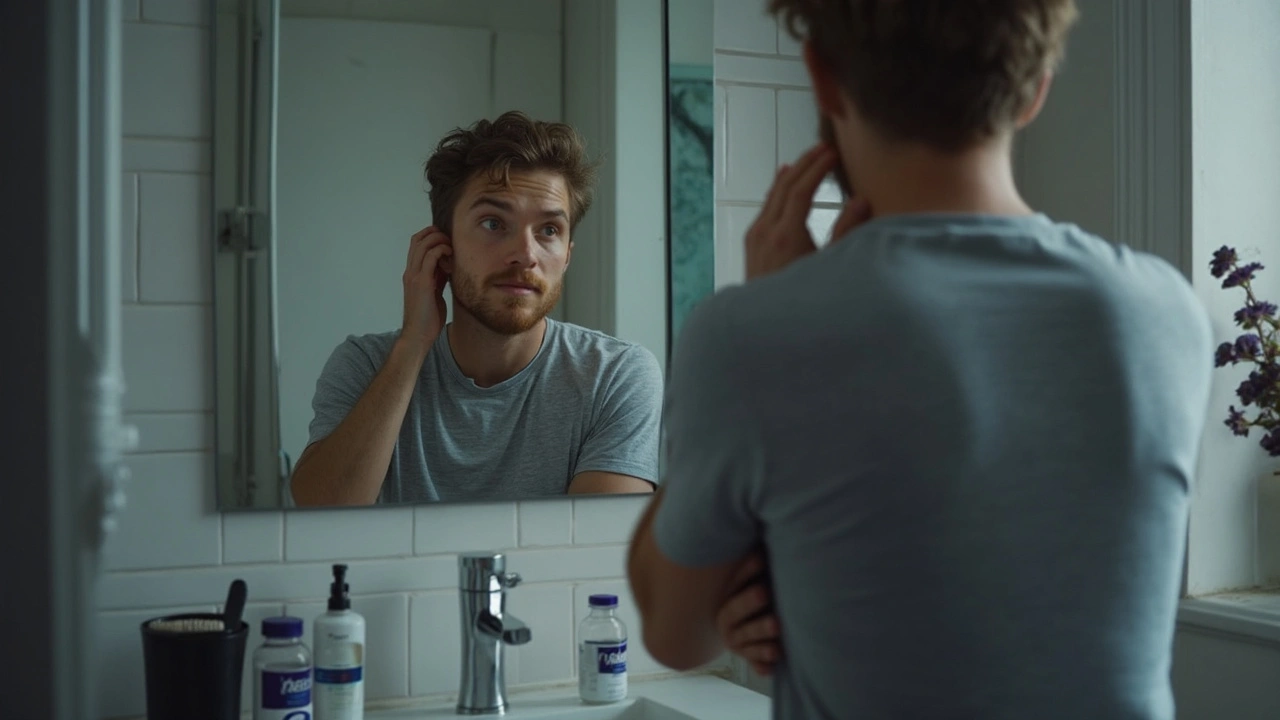Rogaine (Minoxidil): What It Does and How to Use It
Rogaine (minoxidil) is a topical treatment that helps slow hair loss and, for many people, regrow hair in thinning areas. It’s available over the counter as a liquid or foam and is one of the most common first steps for pattern hair loss. If you’re asking whether it works, the short answer is yes for a lot of users—but timing and consistency matter.
How it works
Minoxidil opens potassium channels and increases blood flow at the scalp, which can wake up shrinking hair follicles and push hairs back into a growth phase. That doesn’t fix hormones that cause male or female pattern baldness, but it can thicken existing hairs and produce new, finer hairs over time.
How to use Rogaine safely
Start with clean, dry scalp. Apply the recommended dose—usually 1 mL of liquid or half a capful of foam—to the thinning areas twice a day for men and once daily for many women, unless your product label says otherwise. Gently massage it in and let it dry before using other products or going to bed. If you miss a dose, skip it—don’t double up.
Be consistent. Most users need at least 4 months before seeing early signs of regrowth and up to 12 months for clearer results. If you stop using it, any gains usually fade within several months.
Common side effects include scalp irritation, itching, or dryness. Some people notice unwanted facial hair growth if the product spreads off the scalp. Rare but serious effects are chest pain, rapid heartbeat, fainting, or swelling; stop use and see a doctor if these occur.
Rogaine is topical, so it has fewer drug interactions than oral meds. Still, tell your doctor if you have heart disease, low blood pressure, or are on blood pressure medicines. Pregnant or breastfeeding people should avoid it.
OTC Rogaine is sold in pharmacies and online. Compare foam and liquid: foam feels cleaner for oily scalps; liquid can be easier for targeted spots. Look for the correct strength—2% is common for women, 5% for men—unless directed otherwise by a clinician.
If Rogaine isn’t enough, ask about prescription options like finasteride for men, topical finasteride, low-level laser therapy, or hair transplant surgery. A dermatologist can assess the cause of hair loss and recommend a plan.
Quick checklist before starting:
- Confirm pattern hair loss with a clinician.
- Pick the right strength and formulation.
- Commit to daily use and patience.
- Watch for scalp irritation or systemic symptoms.
Rogaine can be a simple, low-risk step for many people dealing with thinning hair. If you want help choosing a product or need more detailed guidance, AccessRx.su has practical guides and comparisons to help you make an informed choice.
Want deeper info? Check product comparisons, user reviews, and safety guides on our site. Talk to your dermatologist before combining treatments, and track progress with photos every month for best results. Stay patient and consistent. Always.
Rogaine: The Real Story Behind Minoxidil, Hair Loss, and Regrowth
If you're losing your hair or worried about thinning, you've probably heard about Rogaine. This article untangles the facts about minoxidil, goes behind the science, looks at real user tips, side effects, and directly tackles the myths. Forget marketing promises—here’s what actually works for regrowing hair and what to expect, with the honest details you never knew you needed.

